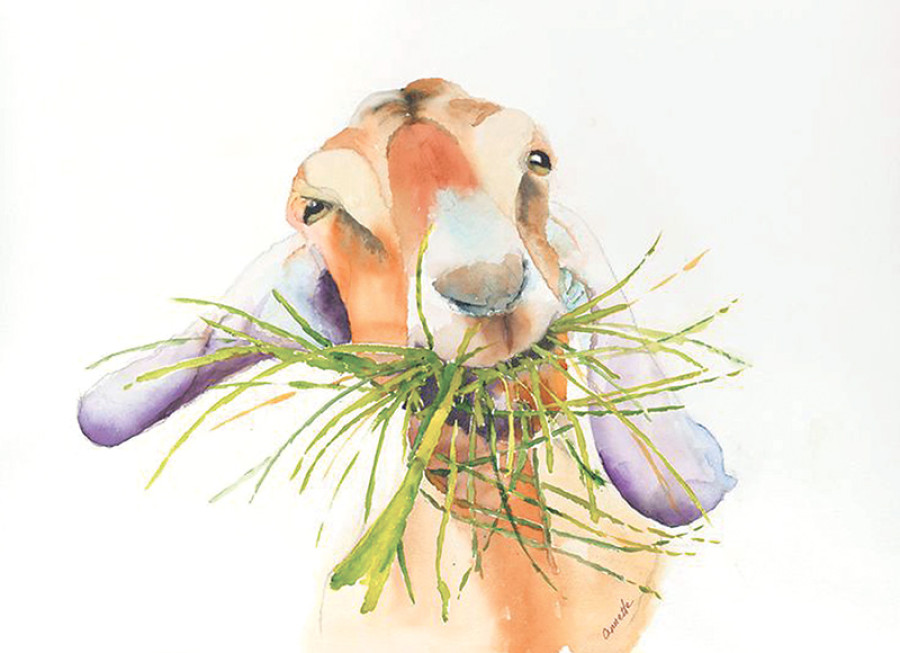Opinion
Land of milk and honey
Nepal is rich in agro-ecological diversity, and one finds a range of livestock production systems that have evolved in each region in tune with naturally available resources and the needs of the people. Livestock rearing in Nepal is highly segmented.
Kedar Karki
Nepal is rich in agro-ecological diversity, and one finds a range of livestock production systems that have evolved in each region in tune with naturally available resources and the needs of the people. Livestock rearing in Nepal is highly segmented. A vast majority of livestock producers belong to underprivileged sections of rural communities, and need a livestock development and research paradigm to achieve sustainable development. Livestock is important in their livelihood culture, and they have limited alternative opportunities for employment. Studies have shown that mixed crop-livestock production is one of the most effective methods of poverty alleviation.
In contrast, resource-rich sections of the rural population also utilise livestock development to optimise their wealth. This section has the means and ability to obtain the desired variety of livestock in addition to inputs and services. From the point of view of the national economy and exports, the output of the resource-rich segment of the population is also important.
Going up the food chain
Underprivileged livestock producers face a number of constraints. Their access to modern livestock services, especially veterinary services, is poor. They receive low prices for their products. For example, a majority of milk producers get only 50 percent of the retail price. Credit support to buy animals is not easily available to smallholders. Underprivileged farmers commonly rear goats, pigs and backyard poultry, and they get very little development or research support.
The peri-urban production system has developed around cities and towns that have high demand for milk. Peri-urban dairy farmers rely mainly on purchased feed. They are commercially oriented and respond to improved technical inputs and marketing services. They often sell milk directly to consumers in the city and it is the major source of their income.
Presently, only a very small slice of the livestock sector has been industrialised. Examples include commercial poultry farming, dairy farms and a few goat and pig farms. While economies of scale allow producers to reduce their cost of production in an industrial system, their social, environmental and public health costs may prove to be extremely expensive in the long run. An industrial system requires conversion of good farm land that can feed humans into fodder plots to feed animals. They accelerate the conversion of natural forests and grasslands into pasture. Producers concentrate a large number of animals in a small area, leading to accumulation of animal waste. This contaminates the air, soil and water and increases the risk of communicable diseases.
Since current trends indicate that a large share of the requirement will be met by industrialised production, there is a need to introduce policy changes so that small producers can benefit from this demand and compete with organised industries. These policy changes include vertical integration of small producers with livestock food
processors through contract farming.
More money, more meat
A sustained rise in the per capita income and urbanisation is fuelling rapid growth in demand for animal food products. Though urbanisation will continue to be the main driver of demand growth, rural areas will not lag behind. Moreover, global trade in livestock products has also been increasing fast, creating opportunities for higher exports. Livestock production has been growing faster than crop production, and the momentum is likely to continue because of its greater scope.
The growth in livestock production will enable millions to escape the poverty trap, as the distribution of livestock is more equitable compared to land. A growing livestock sector will also contribute to women empowerment. An improvement in livestock production is an important pathway for increasing the income of marginal and small farmers and landless labourers considering the uncertainties of crop production. However, there is a need to create an enabling environment so that small producers can take advantage of the opportunities. Constraints to increasing livestock production will need to be properly identified and addressed.
How fast livestock production can be boosted will depend on how technology institutions and policies address constraints. In the past, the growth in livestock production was largely number driven. This may not last in the long run and may stress resources. Future growth should come from improvements in productivity. This will require overcoming feed and fodder scarcities and improving the delivery of animal health and breeding services. Technology will be a key driver of growth, and concentrated efforts will be needed to generate and disseminate yield-enhancing and yield-saving technologies.
Public spending in the livestock sector as a proportion of the value of the sector’s output has fallen considerably over the last two decades. This needs to be increased to re-energise the sector. Markets for live animals and their products are under-developed and dominated by informal traders who often exploit producers. There is a need to strengthen linkages between production and market through cooperatives, producers’ associations and contract farming. This will also help to improve value addition to livestock products which has been quite low. Institutional support in terms of credit and insurance is meagre and needs to be strengthened. Further, the government and industry should prepare producers for quality-driven competition in the domestic and global markets.
It is high time to restructure and revitalise the present institutional setup in the livestock sector, enhance institutional efficiency and promote new institutional models to handle emerging challenges. The efforts should aim to promote and nurture grassroots-level participatory bodies across the country as an organic link between the animal husbandry department and smallholders. They should also promote appropriate technologies, enhance productivity, and increase effectiveness in relation to the time, energy and resources that smallholders, particularly women, put into livestock development and management.
Karki is a veterinarian associated with the Shivaram Hatcheries and feed industries, Birgunj




 8.12°C Kathmandu
8.12°C Kathmandu










